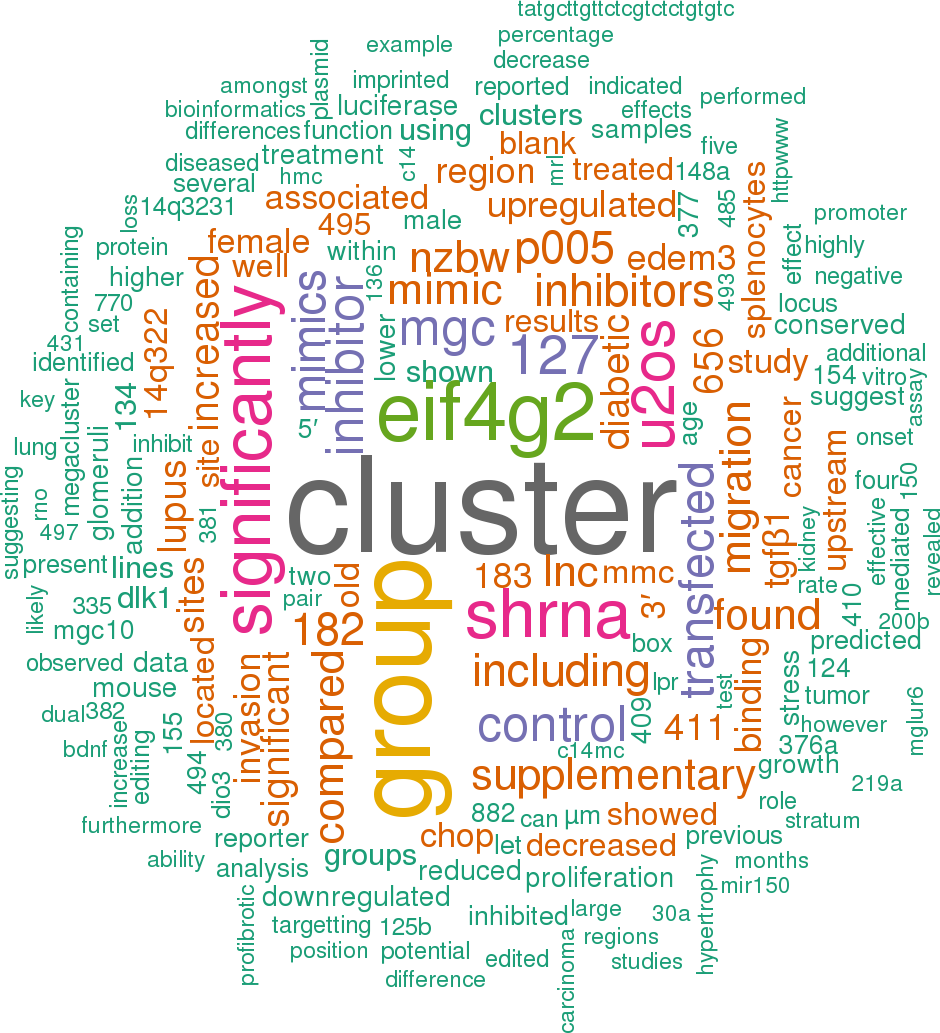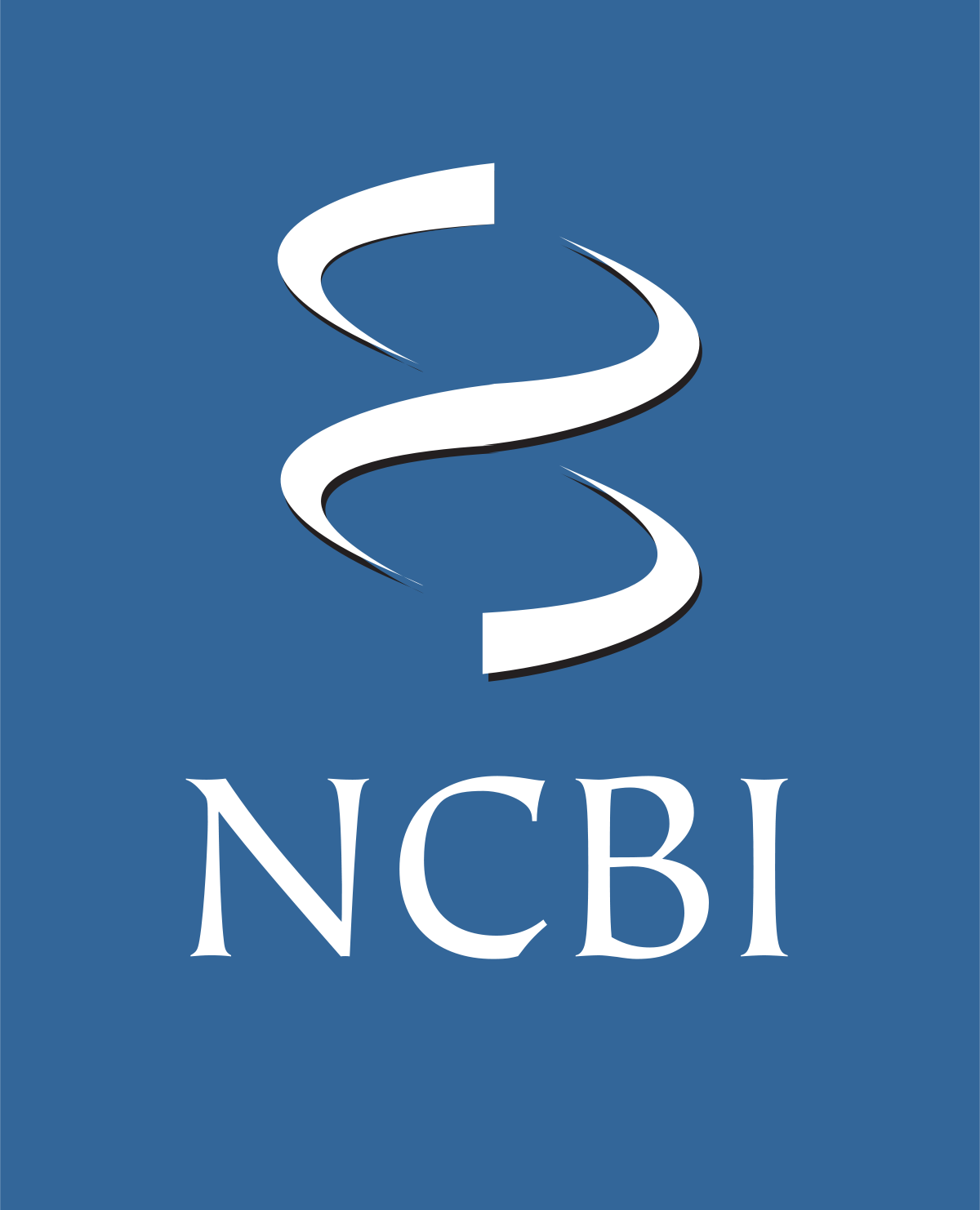Accession
MI0000787
Symbol
HGNC:
MIR379
Description
Homo sapiens
hsa-mir-379 precursor miRNA mir-379
Gene
family?
family?
RF04292;
mir-379
Summary
Caution, this is an AI generated summary based on literature. This may have errors. ?
MIR379 is an imprinted microRNA that is part of the DLK1-DIO3 genomic region and is implicated in various biological processes and diseases [PMC3743905]. It is activated during the epithelial to mesenchymal transition in prostate cancer cells [PMC5195822]. MIR379, along with other miRNAs, forms a cluster that has been associated with sensitivity to certain chemotherapeutic agents in cancer cell lines [PMC9716673]. This miRNA has been shown to maintain stable levels during induced long-term potentiation, suggesting a potential role in synaptic plasticity [PMC7486624]. MIR379 has also been implicated in skeletal muscle differentiation and has been correlated with various lipid levels in early-stage non-alcoholic fatty liver disease (NAFLD) patients, suggesting its potential as a biomarker for early detection of NAFLD [PMC8111742], [PMC9738374]. Furthermore, MIR379 expression levels were found to be significantly higher in patients with early-stage NAFLD compared to controls [PMC9738374]'>PMC9738374], and its serum levels were increased in a Japanese population of NAFLD patients [PMC9738374]. It targets numerous genes involved in different biological processes and diseases such as diabetic nephropathy (DN) and may have therapeutic implications for conditions like obesity and type 2 diabetes when inhibited by specific modalities like GapmeRs [PMC9535382], [PMC8255808].
Literature search

48 open access papers mention hsa-mir-379
(227 sentences)
(227 sentences)
Sequence
93096
reads,
109
reads per million, 119 experiments
agagaUGGUAGACUAUGGAACGUAGGcguuaugauuucugaccUAUGUAACAUGGUCCACUAACUcu
((((.((((.(((((((..(((((((((..........)).)))))))..))))))).)))).))))
((((.((((.(((((((..(((((((((..........)).)))))))..))))))).)))).))))
Structure
a A GA - uuau
agag UGGU GACUAUG ACGUAGG cg g
|||| |||| ||||||| ||||||| ||
ucUC AUCA CUGGUAC UGUAUcc gu a
A C AA a cuuu
Annotation confidence
High
Do you think this miRNA is real?
Comments
The mature sequence shown here represents the most commonly cloned form from large-scale cloning studies [4].
Genome context
chr14: 101022066-101022132 [+]
Clustered miRNAs
11 other miRNAs are < 10 kb from hsa-mir-379
| Name | Accession | Chromosome | Start | End | Strand | Confidence |
|---|
Disease association
hsa-mir-379 is associated with one or more human diseases in the Human microRNA Disease Database
| Disease | Description | Category | PubMed ID |
|---|
Mature hsa-miR-379-5p
| Accession | MIMAT0000733 |
| Description | Homo sapiens hsa-miR-379-5p mature miRNA |
| Sequence | 6 - UGGUAGACUAUGGAACGUAGG - 26 |
| Evidence |
experimental
cloned [2-4] |
| Database links |



|
| Predicted targets |



|
Mature hsa-miR-379-3p
| Accession | MIMAT0004690 |
| Description | Homo sapiens hsa-miR-379-3p mature miRNA |
| Sequence | 44 - UAUGUAACAUGGUCCACUAACU - 65 |
| Evidence |
experimental
cloned [4] |
| Database links |



|
| Predicted targets |



|
References
|



